The Bauhaus movement was one of the most influential art movements of the 20th century. It began in Germany and was founded by Walter Gropius, a renowned German architect. He aimed to bring the different approaches of art together and combine aesthetics with functionality.
In 1933 the Bauhaus school was shut down permanently under the Nazi regime. But, Bauhaus left behind a legacy soon to be picked up by many artists, craftsmen, architects, and designers globally.
Its focus on minimalism, geometric shapes, simple color palettes, and innovative approaches led the Bauhaus to significantly contribute to modern design.
In this post, we’ll dive into deeper detail. We’ll explore what Bauhaus is, its history, its importance, its principles and characteristics, and the people behind it.
What is Bauhaus?
The Staatliches Bauhaus or Bauhaus (literally meaning: Building House) was a German art & design school. It was founded by German architect Walter Gropius at Weimar in 1919 and operated in 3 cities: Weimar, Dessau, and Berlin.
Due to its unique approach to design, Bauhaus became a center for the most influential art movement in the 20th century. The art curriculum or syllabus was designed in a way that allowed students to work with and combine different art forms for their projects.
Bauhaus’s design went on to become one of the most popular trends in modern design, architecture, and graphic design. Its unique approach features geometric shapes and an abstract style aimed to simplify design and make it functional when applied to usable products.
History of the Bauhaus Movement
The Bauhaus movement had a short-lived history with its fair share of political quarrels.
After its origin in Weimar in 1919, the Bauhaus school moved to Dessau in 1925. After that, it moved to Berlin in 1932 and after being politically pressured by the Nazis, Bauhaus was forced to close in 1933.
The shifting of the Bauhaus caused different people to undertake its leadership. Below we’ll learn more about who these people were and what outcomes Bauhaus produced during that time.
Walter Gropius (Weimer, 1919 – 1925)
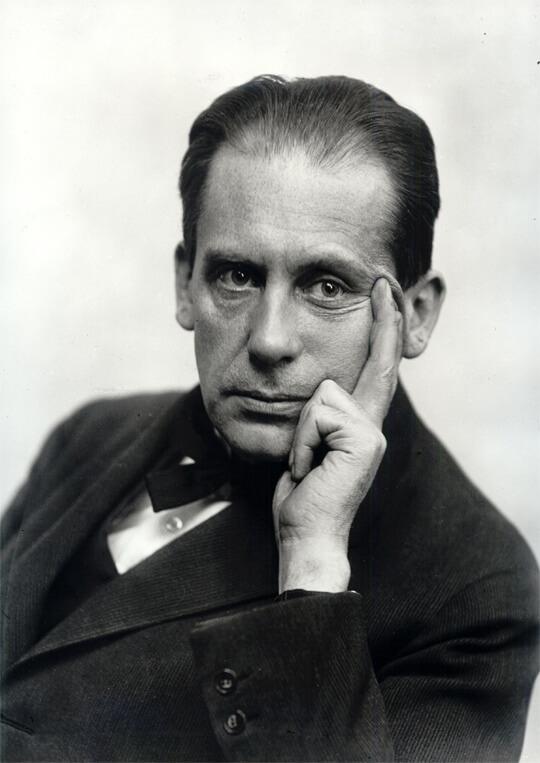

Walter Gropius was a German architect and founder of the Bauhaus school in Weimar, in 1919. He founded the school in hopes of combining different disciplines to make “comprehensive artwork” or a Gesamtkunstwerk.
The school’s roots lie in the Arts and Crafts School of Grand-Ducal Saxon founded by the Grand Duke of Saxe-Weimar-Eisenach in 1905. The school was directed by Belgian architect Henry van de Velde. After WWI escalated in 1914, Henry was forced to resign because of his Belgian nationality.
After stepping down, Henry recommended Gropius as his successor to direct the school. Gropius was appointed as master of the Grand-Ducal Saxon School which provided him with the opportunity to make his dream into a reality.
In 1919, he transformed the school into the Bauhaus school as a merger of the Grand-Ducal Saxon Academy of Fine Art and the Grand Ducal Saxon School of Arts and Crafts. The school attracted many famous artists from around the world including Johannes Itten, Wassily Kandinsky, Herbert Bayer, and many more.
It was during this year that Gropius stated his goal with the Buahaus which he issued in a pamphlet titled “Exhibition of Unknown Artists” and stated he wanted, “to create a new guild of craftsmen, without the class distinctions which raise an arrogant barrier between craftsman and artist.”
At Weimar, Gropius laid the foundation of Bauhaus where he emphasized the importance of an interdisciplinary approach to art.
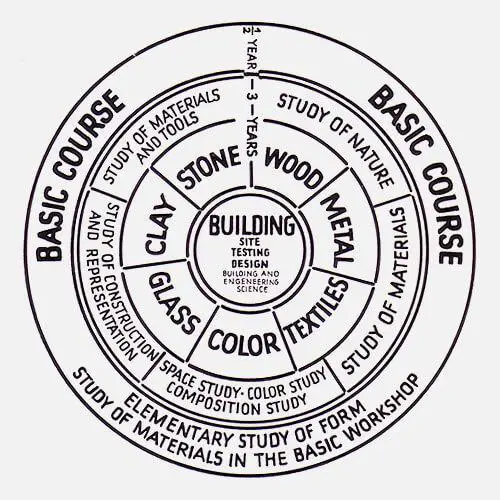
Since the Bauhaus design was still in its experimental stage, the school saw a few changes in its curriculum. The founder, Walter Gropius himself, also had some shifts in perspective.
It’s safe to say that when Gropius started his journey, the Bauhaus was inspired by expressionism as he described painting and sculpture in the pamphlet as “rising to heaven out of the hands of a million craftsmen, the crystal symbol of the new faith of the future”
But as times advanced Gropius saw the need for some changes. In 1923 he declared that “we want an architecture adapted to our world of machines, radios, and fast cars.”
He argued that after the first world war, a new era in art should come about to indicate a start of a new history. Thus the Bauhaus style was influenced by modernism and expressionism and featured designs created with geometric shapes that didn’t portray any emotion and were rather simple. It paved the way for mass-producing high-quality, functional products at an artistic level.
Bauhaus seemed to be a great success but Gropius was soon to be faced with political pressure from the Thuringian government. Weimar was a city in the Thuringia German state and the Bauhaus school was state-supported by the Social Democratic Party.
After 1923 Bauhaus was faced with political pressure from right-wing nationalists who thought that the school was attracting foreigners who had an increased sympathy for communism. Thus in 1923 The Ministry of Education cut 50% of the funding to the Bauhaus school and placed the staff on six-month contracts.
On 26 December 1924, The Bauhaus issued a press release stating the closure of the Bauhaus school at the end of March 1925.
Hannes Meyer (Dessau, 1925 – 1932)
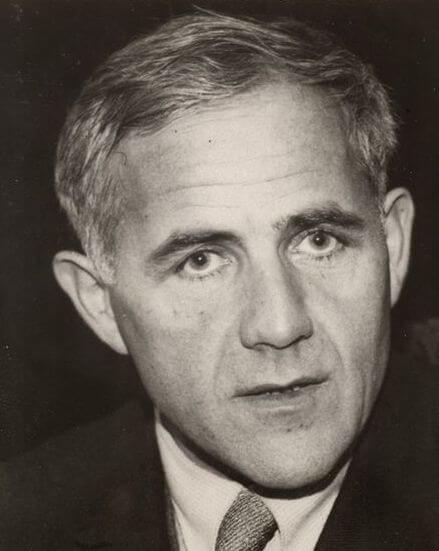

After the closure of Bauhaus in Weimar the school was moved to Dessau. Gropius approached the Dutch architect Mart Stam to take part in Bauhaus’ newly formed architecture program. Stam declined the offer so Gropius approached his friend and colleague Hannes Meyer. He accepted the offer and was appointed as head of the Bauhaus architecture program.
In 1928, Gropius resigned and Meyer was appointed as director of Bauhaus Dessau. In Dessau, Bauhaus saw a shift in its practices, and led to commissioning two significant building projects.
The first were five apartment buildings in Dessau and the second was the Bundesschule des Allgemeinen Deutschen Gewerkschaftsbundes (ADGB Trade Union School) in Bernau bei Berlin.
His philosophy was that aesthetics had nothing to do with architecture and that buildings should be built with only function in mind. Thus, many of his works were built on precise calculations and existing architectural materials to reduce costs.
This attracted a lot of potential clients, mainly due to the low costs, but was unpopular amongst aesthetic designers. Since Meyer was against aesthetics in architecture he forced the resignations of long-term instructors of the aesthetic program in the Bauhaus School.
In 1930, Hannes Meyer was fired by the mayor of Dessau, Fritz Hesse, due to growing concerns of Meyer promoting “communist activities.”
After his firing, the city council of Dessau tried to convince Gropius to come back as head of the Bauhaus. However, Gropius appointed Ludwig Mies van der Rohe in 1930.
After his appointment, Mies immediately started making some changes. He quickly interviewed each student and removed the ones that didn’t meet the school’s criteria. He also stopped the production of goods from the school so they can focus solely on teaching students.
A year later in 1931, the Nazis started gaining more political power and took over the Dessau City Council. Fearful of the political pressure the school may face, Mies moved the Bauhaus school to Berlin.
Mies van der Rohe (Berlin, 1932 – 1933)
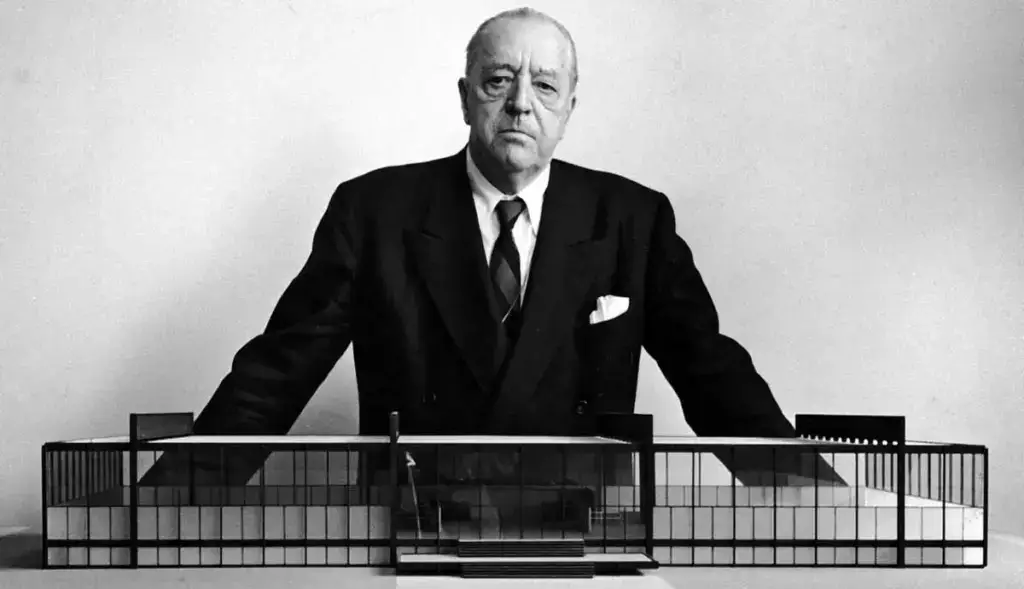
Ludwig Mies van der Rohe was one of the top architects in Germany at the time when he was approached by Gropius to lead the school.
After being faced with immense pressure from the Nazis, Mies moved the Bauhaus school to Berlin in 1932. Over there he rented a telephone factory and transformed the school into a private institution with his own funds.
The students and staff joined hands in renovating the building, painting its walls white, and organizing the furniture. For 10 months the school operated as normal without further intervention from the Nazis.
In 1933, the Nazi police known as Gestapo forced the school’s closure. But Mies protested the decision and convinced the head of the Gestapo to re-open the school so the decision was reversed.
End of the Bauhaus
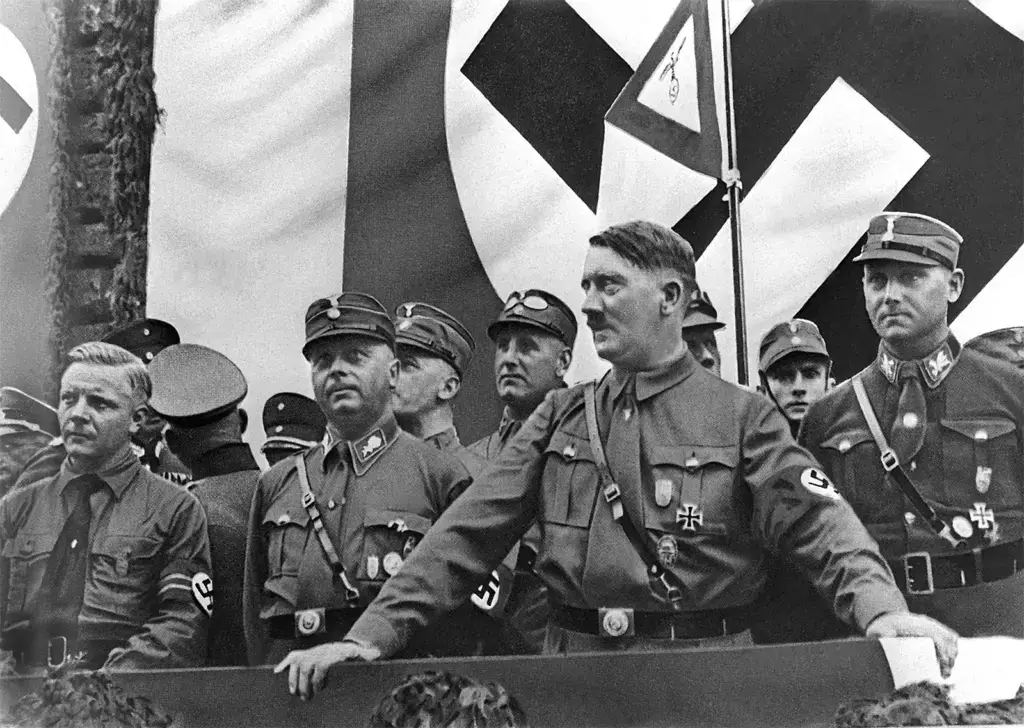
Even after the school had shifted to a private building and was given permission by the Gestapo to remain open, the Nazis did not stop harassing the school’s practices.
The Nazi Government wasn’t explicitly against architectural design. But, even before the Nazis took control over Germany, Bauhaus design and its practices were labeled “un-German” and known as degenerate art, a term used by early Germans to describe modern art.
Nazi writers like Wilhelm Frick and Alfred Rosenberg purposefully created controversies around Bauhaus to force its closure. During the 1930s many accused the Bauhaus of being a forefront for communists, which isn’t exactly wrong as Hannes Meyer and many of his loyal students fled to the Soviet Union after he was fired from the school.
Other than the public pressure, the Nazis were also keen to condemn any traces of cosmopolitan modernism. Gropius protested against these accusations stating that he had served as an army officer for Germany and that his works had no political intent.
Despite all their efforts, the faculty at Bauhaus unanimously decided to close the Bauhaus as they flatly refused to work with the Nazis.
What was the Main Idea of the Bauhaus Movement?
Walter Gropius hoped to reunite the fine arts with functional design, which is why he pushed for a combination of the different approaches to artistic works to create aesthetically pleasing but practical objects.
The Bauhaus school was also developed to not only teach students about aesthetics but concern themselves more with the intellectual and theoretical approach to design. This level of thinking allowed students to look past the barriers placed between the arts ever since the Renaissance and integrate all the arts as part of their designs.
Finally, Bauhaus aimed to help and encourage experimentation with a problem-solving approach to art & design. This led to rethinking how we see visual arts and in turn, morphed the process of designing into more of a science than an art.
What Defines Bauhaus Design?
You may wonder what might be considered a part of Bauhaus design. You shouldn’t have to guess what art and design movement a design is part of or shares similar characteristics of.
To make it easier to identify the designs that incorporate a Bauhaus style, we’ve discussed some principles important to the Bauhaus movement below.
Principles of Bauhaus Design
Being known for its consistent designs, it’s no doubt that Bauhaus had set some core principles that each design produced from the Bauhaus followed.
Form Follows Function
The main principle of the Bauhaus was functionality. During the Bauhaus era, the primary focus was on building elegant and modern designs while maintaining its function.
No Difference Between Artist and Craftsman
As mentioned earlier Walter Gropius gave the idea of unifying the works of artists and craftsmen to level the boundaries between the two disciplines. Thus, bringing together multiple disciplines to create beautiful and practical art was one of the guiding principles of Bauhaus design.
This was best stated by Gropius himself:
“The ultimate aim of all artistic activity is building! Architects, sculptors, painters, we must all get back to craft! The artist is a heightened manifestation of the craftsmen…let us form… a new guild of craftsmen without class divisions that set out to raise an arrogant barrier between craftsmen and artists. Let us together create the new building of the future which will be all in one: architecture, sculpture and painting.”
Walter Gropius
Minimalism
If you’ve come across any design from the Bauhaus, you’ll notice that it has a minimalist approach. Artists from the Bauhaus emphasized using simple geometric shapes such as squares, triangles, and circles for their designs. They avoided using floral patterns or curvilinear shapes and kept their designs clean – unlike those that you’d perhaps see in the Art Nouveau period.
Use of New and Industrial Materials
Since the Bauhaus movement paved the way to merge art and industries, there was often the use of industrial materials such as glass, concrete, and steel in their designs. There was a variety of materials used and to use them effectively they also had to develop new attitudes and adopt new techniques of working with those materials.
This led to many designs not only having a modern, aesthetic touch to them, but they were also functional and practical when it came to mass-scale commercial production.
Complement Modern Technology
Since industries were developing during the Bauhaus movement, Gropius wanted to adapt to the trend of newer technology to maintain the standard for production. He stated that:
“We want an architecture adapted to our world of machines, radios, and fast cars.”
Walter Gropius
This meant that for Bauhaus, designs don’t just have to be aesthetically pleasing and functional, but also adapt to the technological progress that was being experienced at that time.
Simplicity & Effectiveness
“A designer knows he has achieved perfection not when there is nothing left to add, but when there is nothing left to take away”
Antoine de Saint-Exupery
Bauhaus artists kept things simple by avoiding their designs to look too busy. They looked at the organic design of the stuff they were creating and kept a focus on function rather than using ornamental borders or flowery patterns. Aesthetics was preferred but not at the expense of decreased function.
Constant Development
During its short-lived journey, the Bauhaus saw many changes, and the work of the staff and students adapted to the changing trends and newly discovered techniques. For the Bauhaus movement, change was constant. The designs had quite a lot of variety in them as they were constantly evolving and built upon the previous findings while sticking to the core principles.
Five Characteristics of Bauhaus Design
We’ve mentioned the principles that guided artists of the Bauhaus to create the designs they created. But, what did the output look like and how can we tell whether that certain piece can be considered a true representation of the Bauhaus movement?
Below are some characteristics of Bauhaus designs:
Simple Color Palette
Since the Bauhaus preached simplicity, it’s no surprise that you’ll see a simple color scheme in its designs. By using basic colors such as shades of black and white, grays, and primary colors like red, yellow, and blue, artists of the Bauhaus were able to strike a balance between simplicity, vibrancy, and value.
Many graphic designers even today tend to use only one accent color for a minimalistic design with one primary and one secondary color.
Focus on Geometric Shapes
The Bauhaus focused on using geometric shapes such as squares, triangles, and circles to keep their designs simple, functional, and easier to produce on a wide scale. It did, from time to time, also use abstract shapes for strictly decoration purposes.
Asymmetrical Designs
The Bauhaus school had many experimental approaches to design so it was common to see them go against the typical layouts and rules architects, graphic designers, and artists were used to. This resulted in a handful of asymmetrical designs that broke the rules and went off the grid.
Elegant Design
As you’ll see in most Bauhaus-inspired designs, the design is often kept elegant. This was most commonly seen in their architectural projects where the buildings were created with fine, sleek proportions with minimum detail.
Rational Use of Industrial Materials
We touched on the fact that artists from the Bauhaus used industrial materials such as glass, concrete, and steel. They also made it so that the use of these materials is intentional, serving the purpose of the design, and is not altered in any way.
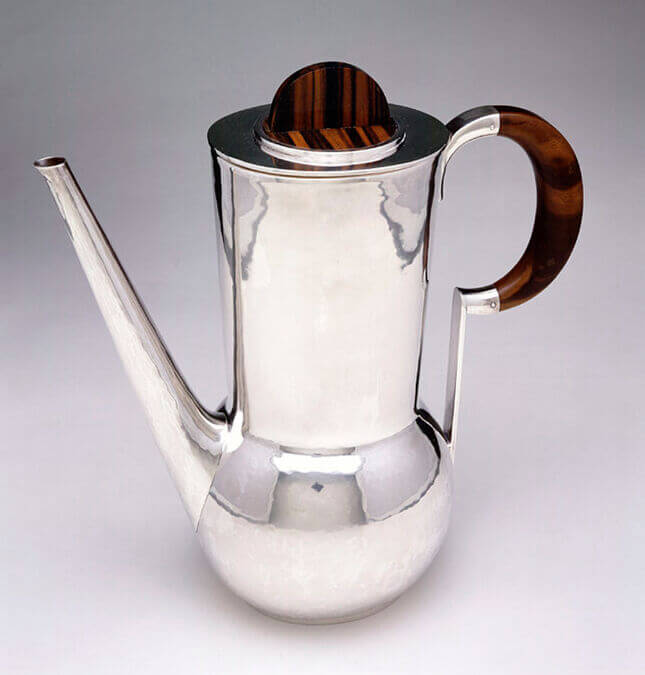
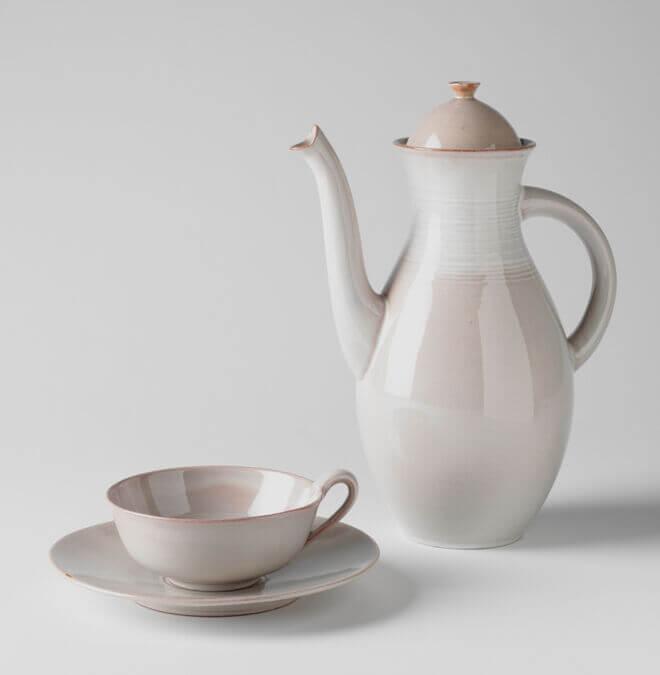
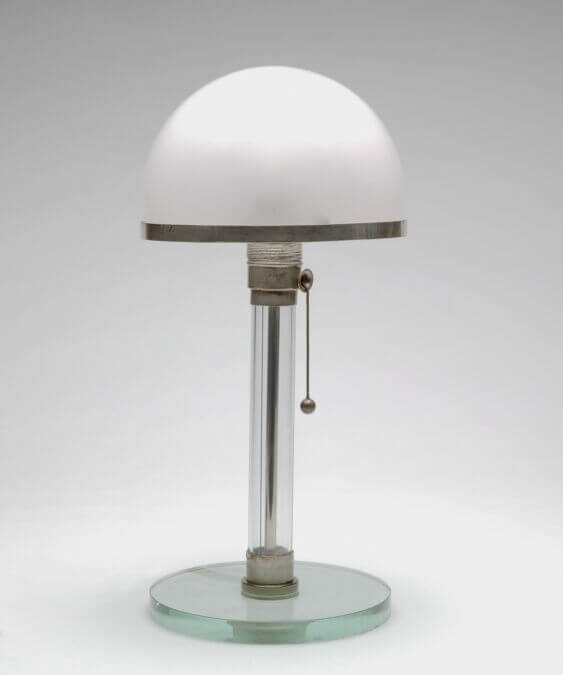
So, in a sense, we can say that Bauhaus designs consisted of authentic or “true” material rather than refined ones.
How Bauhaus Influenced Graphic Design
The Bauhaus movement provided a stepping stone in modern design. Due to its focus on functionality and minimalism, many industries were quick to adopt Bauhaus-style designs. It went on to touch every industry and discipline, and graphic design was no stranger.
Its experimental approach along with its combined power of the visual arts brought about a lot of exceptional pieces of graphic design. The main contributors to the development of graphic design were Laszlo Moholy-Nagy, Joost Schmidt, and Herbert Bayer.
Below we’ll explore some of their work while exploring other works of graphic design that came forth thanks to the Bauhaus movement.
Note: Bauhaus made significant contributions to a range of arts, being mainly known for its contributions to architecture and industrial design. However, since this post focuses on the graphic design aspect, we won’t get into too much detail about the work done in other fields.
Typography
Bauhaus is considered to be a pioneer in the development of sans-serif typefaces. A typography course was part of the curriculum and sans-serif typefaces were favored over ornate blackletter fonts that dominated the German standard at the time.
To ensure consistency, the school set some principles when working with typography:
- Typography should be shaped by functional requirements
- The aim of typographic layout is communication
- For typography to serve social ends, its ingredients need internal organization (content) as well as external organization (materials)
We saw an exceptional range of typefaces developed at the Bauhaus by many notable artists and typographers. The most popular of these was the Universal font developed by Herbert Bayer. Walter Gropius had commissioned Bayer to create a typeface that would be used across all of Bauhaus’ communication, thus the Universal font was born.

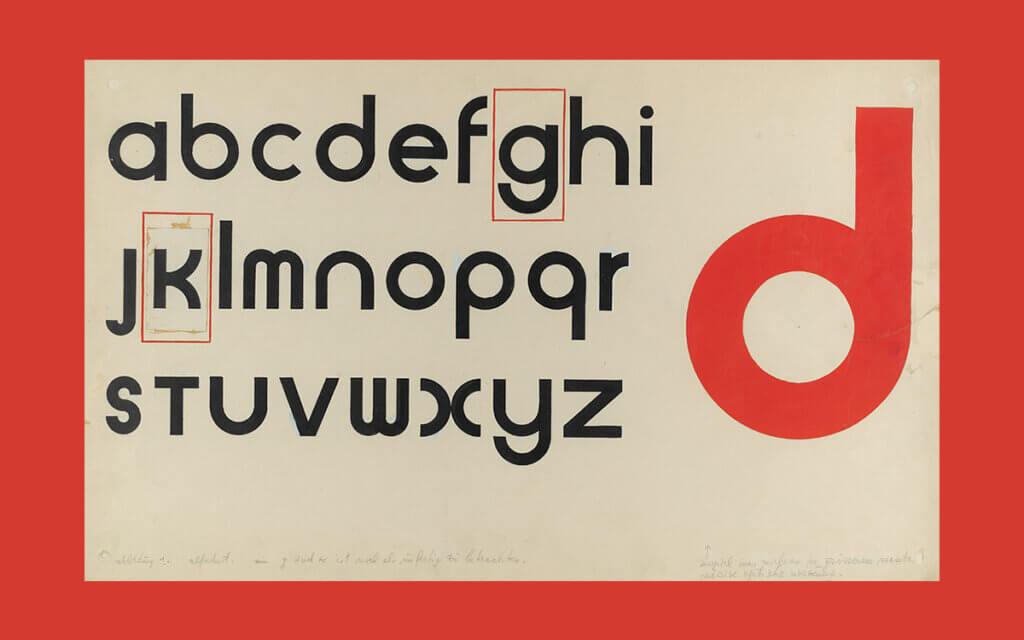
The Universal font later inspired the design of the Bauhaus font also known as the Bauhaus 93 font.
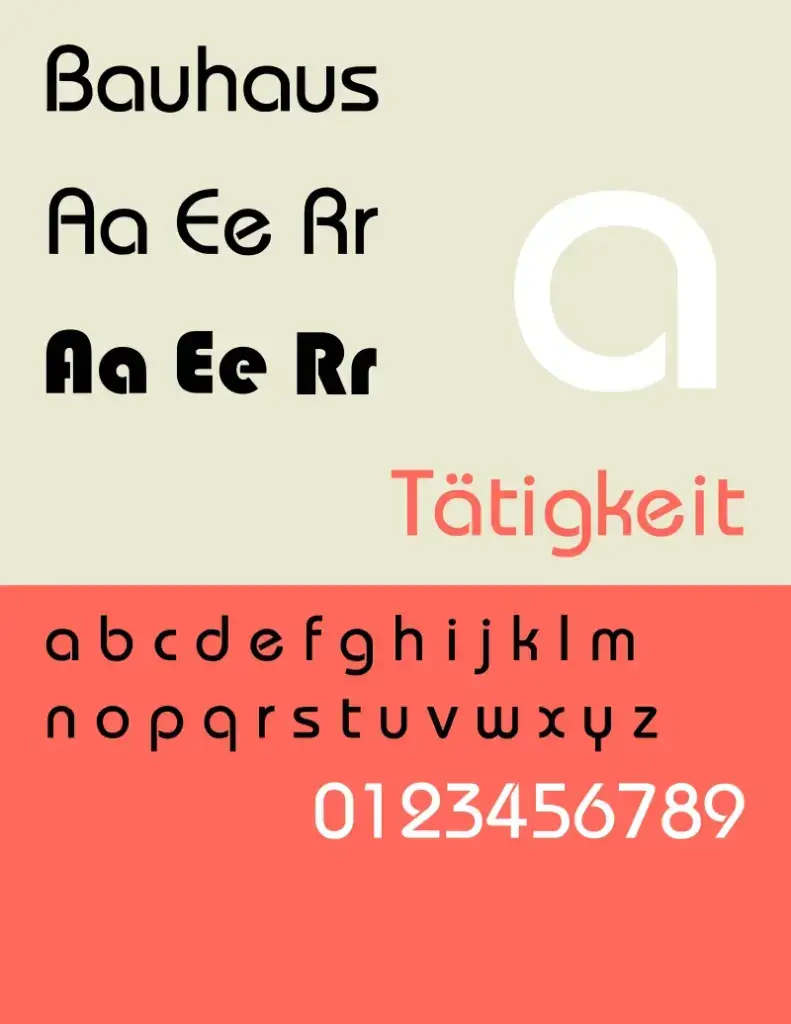
Another major development came from Joost Schmidt who used to teach lettering at the Bauhaus Dessau. All students were required to take two semesters of Schimdt’s lettering course where they explored the structure, shape, and size of the letters. Students were also encouraged to explore the use cases of lettering in advertising and psychology by experimenting with different colors and surfaces.
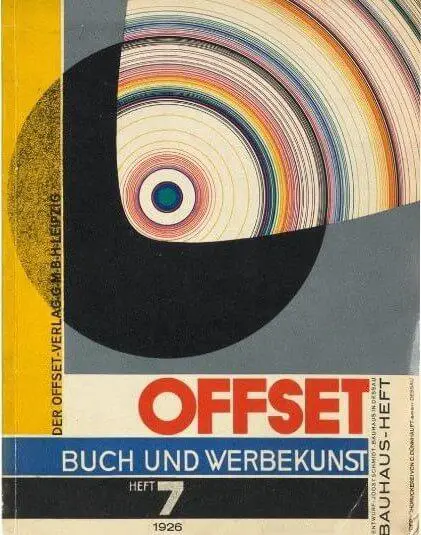
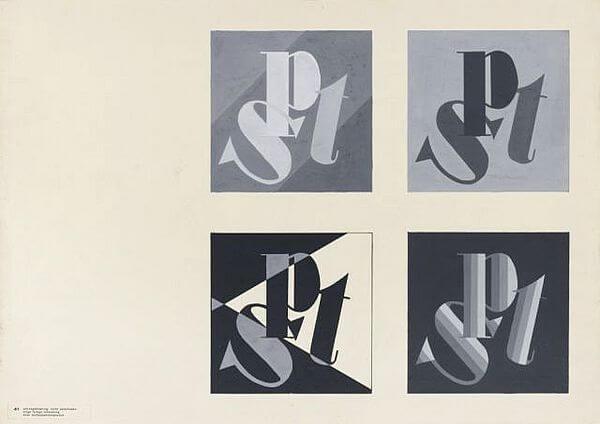
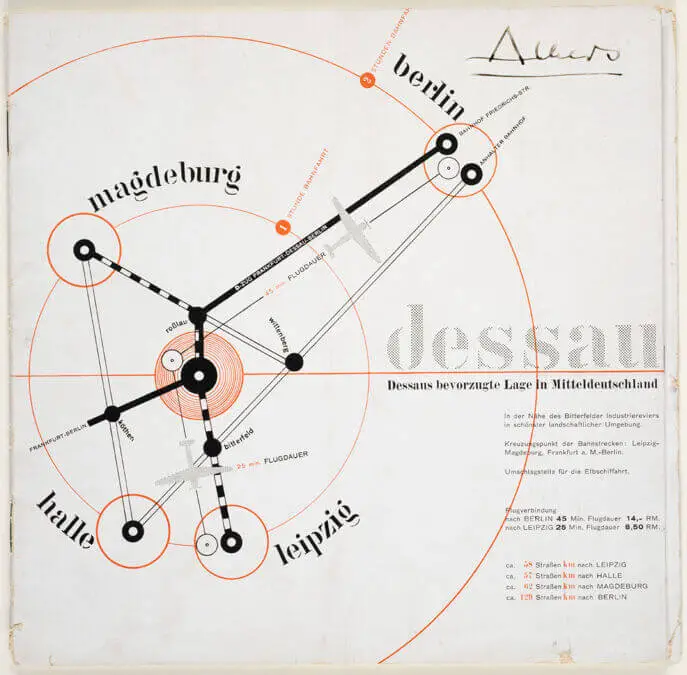
Layout
Many of the designs produced by the Bauhaus made good use of the grid. However, with more experimental projects, it wasn’t out of the ordinary to see some designers “break the grid” and end up with more asymmetrical designs.

Poster & Cover Design
Poster and cover design also saw a revolution in the Bauhaus. Posters and magazine covers seemed to be the perfect medium for the staff and teachers to experiment with layout, typography, and photography.
The Bauhaus saw many of these iconic designs which influence modern print design even today in graphic design.
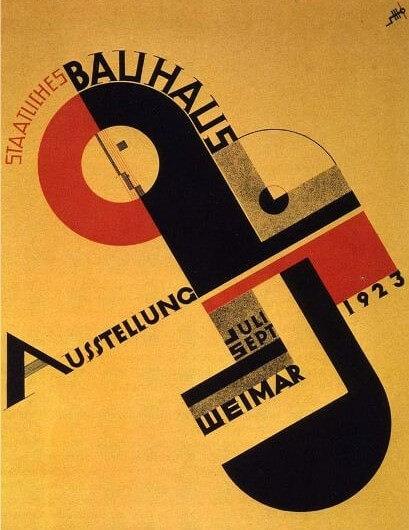

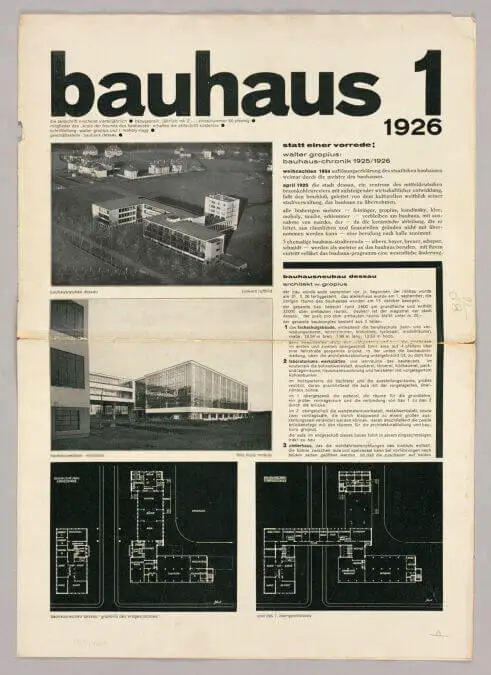
Influential People of the Bauhaus Movement
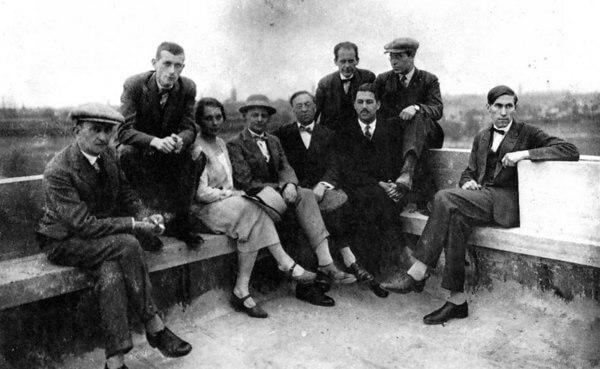
There were many people responsible for turning Bauhaus into a hub for streamlined modern designs. For the sake of simplicity, we’ll only focus on some of the popular ones who made significant contributions to graphic designing amongst other disciplines.
Wassily Kandinsky
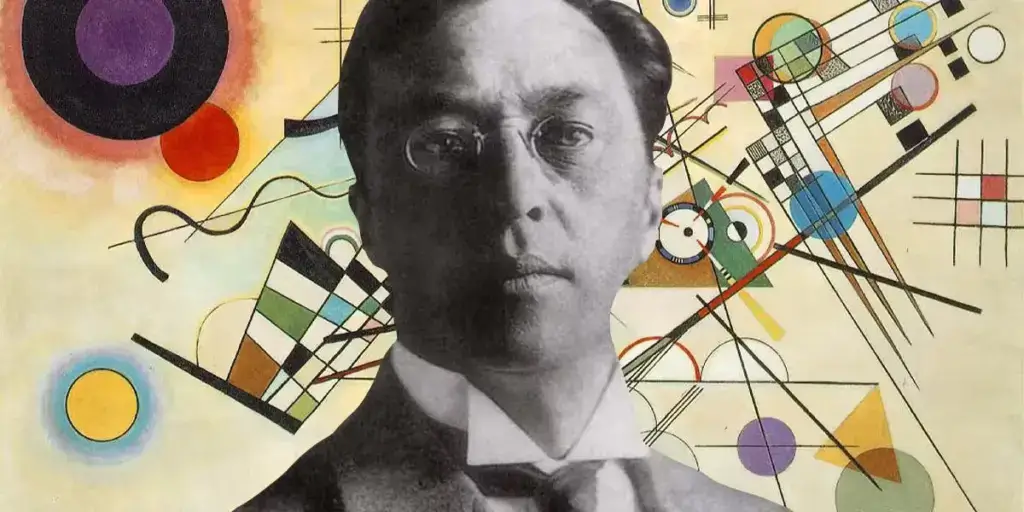
Wassily Kandinsky was a Russian artist mostly known for his abstract artworks and interest in color and sound. He was invited by Gropius to teach at the Bauhaus in 1921 which he gladly accepted.
Kandinsky’s work of abstraction makes him a pioneer in modern abstract art. At the Bauhaus, he used to teach abstract forms and analytical drawings. He also made use of geometric forms and explored the spiritual qualities of color, even developing his own color theory which he used to teach students as a part of his course.
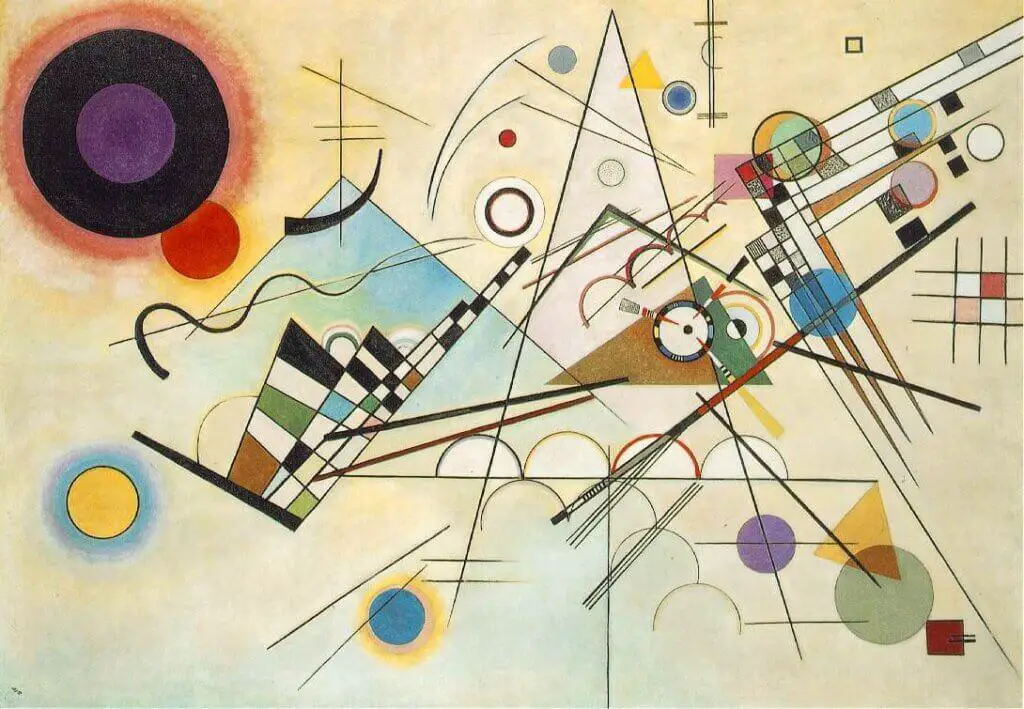
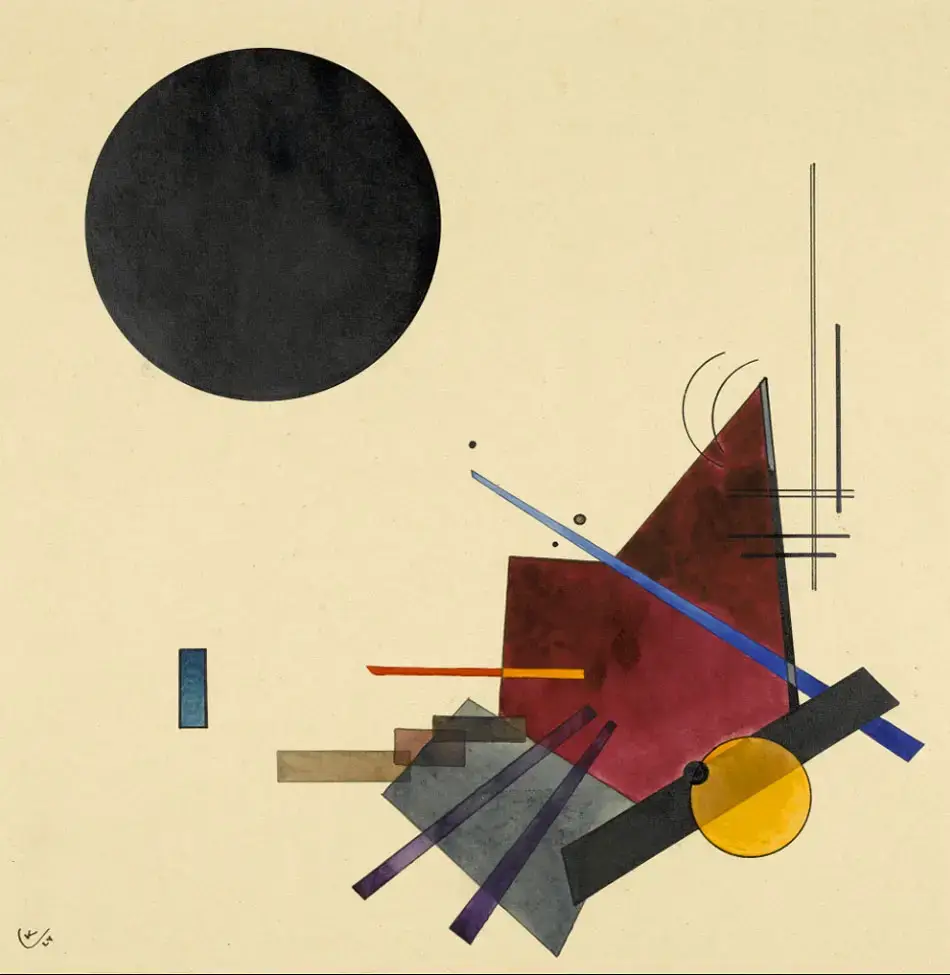
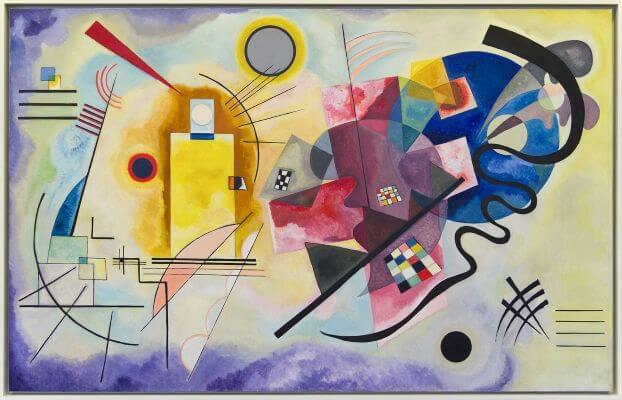
Interestingly, Kandinsky was believed to have the ability to perceive color as sound, known as Chromesthesia or sound-to-color synesthesia. This meant he would involuntarily “hear” colors and his paintings and was constantly aware of his perceptions of color in everyday life.
Kandinsky stayed true to the Bauhaus movement from its inception till its closure in 1933 after pressure from the Nazis.
Paul Klee
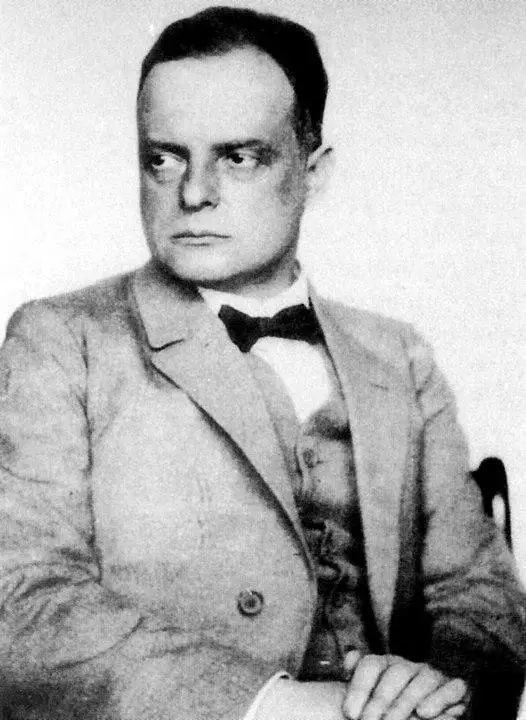
Paul Klee was a Swiss-born German artist who joined the Bauhaus and started teaching in 1920. Klee’s style was distinct from many artists of the centuries as his exact style didn’t have any single root. This is partly because Klee was involved in various art movements including Expressionism, Cubism, Futurism, Surrealism, and Abstraction.
During the ten years he was with the Bauhaus, he taught color theory, the study of nature, and form theory. His design theory studies were formally published while in the Bauhaus in 1925, and his color and form course was taught as a core subject.
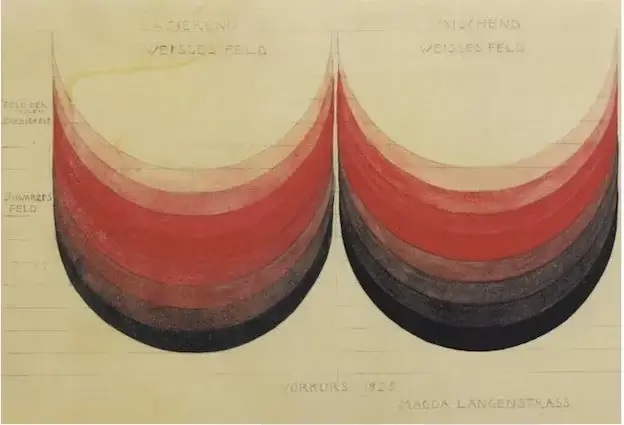
He left the Bauhaus in 1931 and died in 1940. His studies and theories influenced the works of surrealist painters Joan Miró and Andre Masson.
László Moholy-Nagy
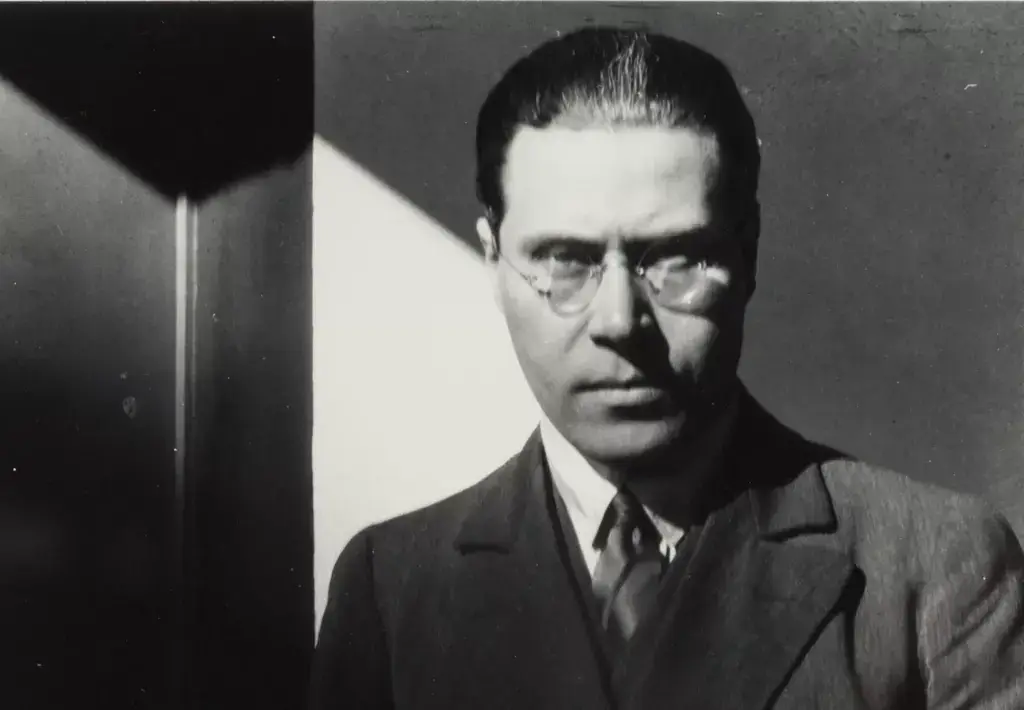
László Moholy-Nagy was a Hungarian artist who joined the Bauhaus as an instructor of the preliminary courses in 1923.
Typography at the Bauhaus was initially restricted and overlooked. But, when László Moholy-Nagy joined the school in 1923, he introduced with him innovative concepts and ideas relating to typography.
Nagy believed that typography was a medium of communication and it should support “clarity of the message in its most empathetic form.” This led him to coin the term Typophoto which is the combination of text and photography.
“What is typophoto?
Typography is communication composed in type.
Photography is the visual presentation of what can be optically apprehended.
Typophoto is the visually most exact rendering of communication.”
László Moholy-Nagy
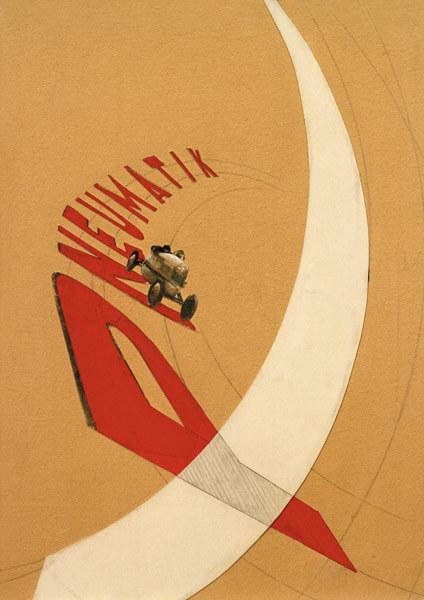
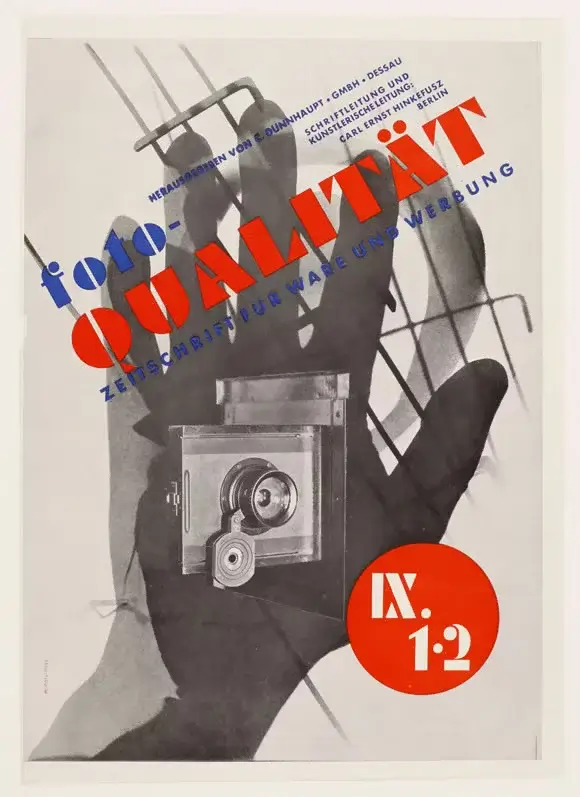
Despite running a metal workshop and teaching in the school, he grew a passion for photography. He was one of the first to recognize the growing importance of the camera and had predicted its popularity.
The illiterate of the future will be the person ignorant of the use of the camera as well as the pen.
László Moholy-Nagy
Herbert Bayer
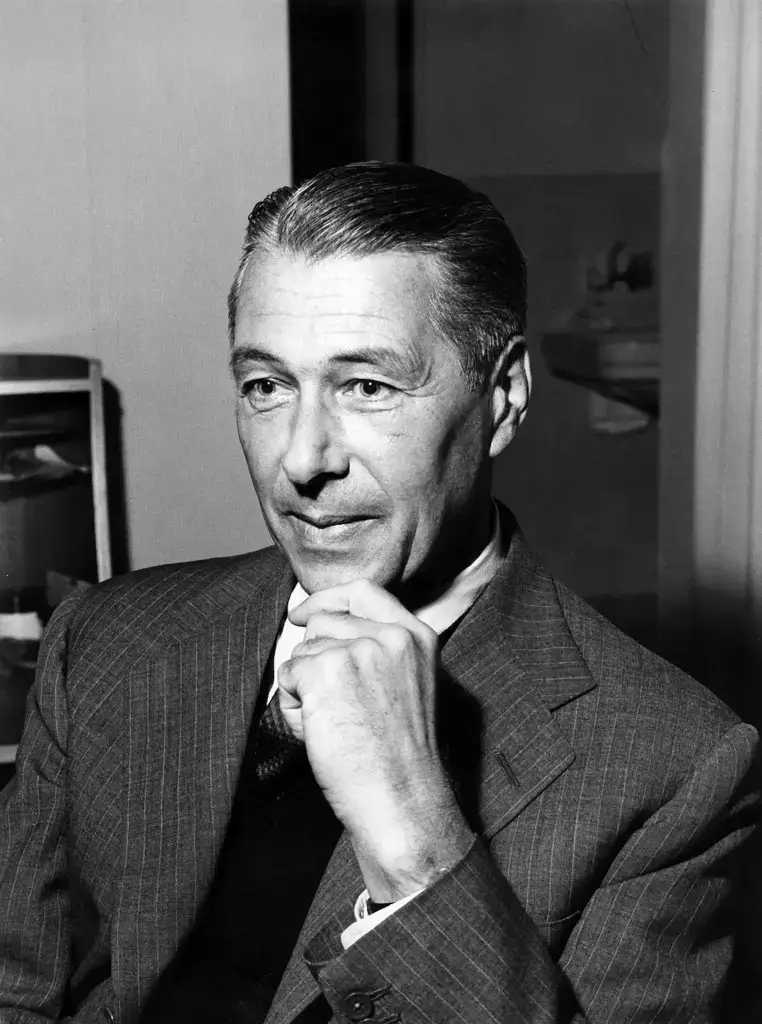
Herbert Bayer was an Austrian-American graphic designer who joined the Bauhaus in 1921 as a student. Bayer was widely known for his experimental approach to typography using the techniques he learned in the school.
From 1925 to 1928, Bayer taught multiple courses on layout, typography, and advertising. Gropius had also commissioned him to create the Universal typeface, an idealist typeface that contained only lowercase letters. It was designed to be used for all of Bauhaus’ communications.

Bayer later went on to set up operations in Berlin and became the manager of Vogue. In 1938, Bayer left his position and emigrated from Germany to the U.S. after facing pressure from the Nazi regime.
Josef Albers
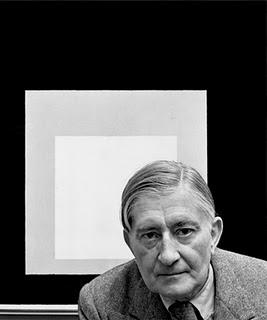
Josef Albers, similar to Kandinsky, was mostly known for his abstract works of art. Although he was also an accomplished designer, photographer, typographer, printmaker, and poet.
Albers enrolled in the Bauhaus in 1920 and was trained under Johannes Itten. Under him, he studied painting but two years later transitioned to stained glass making and started practicing it as a stand-alone art form.
It was in 1923 that Walter Gropius requested him to join the Bauhaus as an instructor and teach students a preliminary course on handicrafts due to his extensive knowledge and experience in the field. Albers accepted and was later promoted to professor when the school moved to Dessau.
Together he and Paul Klee cooperated to teach students in the glass workshops for several years. After the closure of the Bauhaus school, Albers along with many other staff emigrated to the U.S. He then went on to create his successful Homeage to the Square series of paintings.
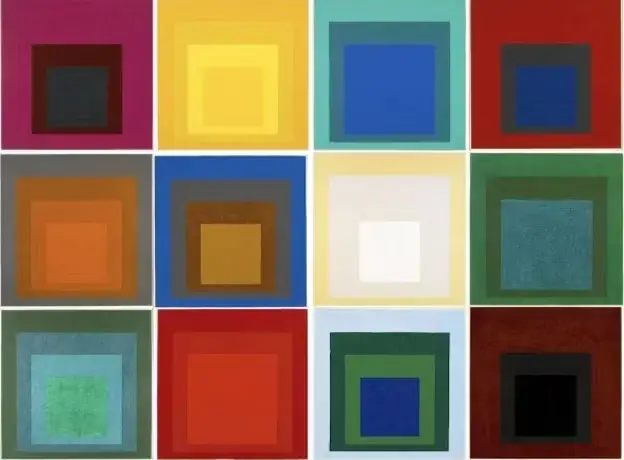
Conclusion
Bauhaus design is everywhere. The Bauhaus movement paved the way for an exciting approach to the arts by combining fine arts with craftsmanship. Along with its emphasis on modern, sleek, and simple geometric designs, the Bauhaus school produced some of the most iconic designs for the modern world.
It had such an influence in the world of art, graphic design, and architecture that many buildings, furniture, designs, and other works of art and design tend to gauge inspiration from the movement.